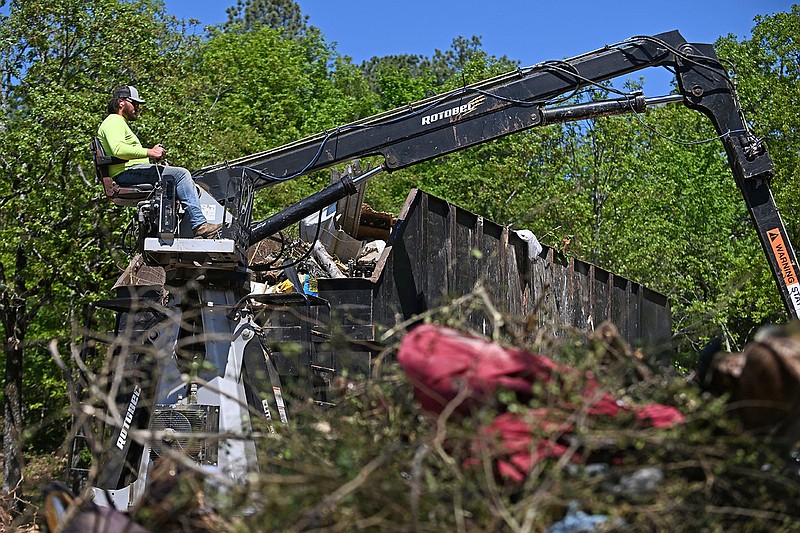This is the third part of a three-day narrative. Read the first part here and the second part here.
Editor’s note: This story includes descriptions of suicide. If you’re struggling with thoughts of hurting yourself, call the national crisis hotline at 988.
One of the most intractable problems in the mental health crisis is how to reduce confrontations with law enforcement.
About 30 percent of people shot by police in the county had documented mental health issues or showed “unstable behavior,” according to a District Attorney’s Office analysis that covered 1993 through 2017.
The Union-Tribune looked at dozens of additional police shootings from 2018 through mid-June and found an even greater proportion.
Psychiatric Emergency Response Teams, or PERT, and Mobile Crisis Response Teams, known as MCRT, were partly created to lessen the bloodshed, and the county has more than tripled the number of law enforcement and mental health clinician groups since 2008.
It’s still not enough to handle the volume of calls.
And sometimes officers are the ones in danger.
WEDNESDAY, APRIL 27
6:30 a.m.: Stuck to the wall of Lisa Garcia’s bathroom is a small piece of paper.
The text, taken from a book, reads almost like a prayer.
A thing is valuable if it promotes inner peace.
The attainment of inner and outer peace is your supreme value.
For three days last year, reporters followed patients, police, clinicians, dispatchers and those struggling for help to create a minute-by-minute account of an overwhelmed system. Here is a 72-hour snapshot of the mental health crisis in San Diego County.
Garcia opens her medicine cabinet and grabs five bottles. Three have the letter “M” scrawled in Sharpie, for “morning.” The other two have a “B” for “both,” meaning they’re for both morning and night.
In her El Cajon home, she pours eight pills into her hand and pops them all into her mouth.
It sure beats the hospital.
In 1989, Garcia’s mom died. She broke up with her boyfriend. She stopped going to her catering job and stopped taking her 8-year-old to school.
She was hospitalized after her family staged an intervention. But it wasn’t clear what was wrong. Medications were tried and abandoned. Garcia crashed her car into the back of a semi-truck. Another time she disappeared for days in a casino.
After another hospitalization, she got the correct diagnosis: She has bipolar disorder.
Garcia found the right pills and a therapist told her about Recovery International, the same organization from which Crystal Jenkins took a course.
Garcia has now worked at Recovery for nearly 25 years.
She credits the nonprofit’s approach with helping keep her well.
Members of Chula Vista’s Homeless Outreach Team talk with Gary Burke, who was living in his motor home. Burke was open to help, but he needed transportation.
(K.C. Alfred/The San Diego Union-Tribune)
8:26 a.m.: Gary Burke needs a ride.
His home is a beige and orange RV parked on C Street by downtown Chula Vista. A small crowd of police, nurses, PERT clinicians and nonprofit staffers gather around, part of the Chula Vista Police Department’s Homeless Outreach Team.
Similar groups have popped up around the region in recent years.
There were more than 8,500 homeless people in the county near the start of last year, a 10 percent increase from the previous tally, according to the San Diego Regional Task Force on Homelessness. That’s almost certainly an undercount.
More than a third of those surveyed on the street said they had a mental health disorder.
From the RV, Burke says he’s a homeless veteran with brain trauma and post-traumatic stress disorder, and he’s willing to go to the San Diego Veterans Affairs Medical Center.
But the facility’s in La Jolla, about 20 miles away. RV parking is hard to find, and gas is expensive.
“He can go on the trolley,” one person says.
“He’ll need a bus pass,” says another.
“We have the numbers to give him a ride,” Lt. Ernie Pinedo says. “Maybe he decides in the trolley, ‘You know what, I’m not gonna go.’ So, let’s just take him straight there.”
Someone tells Burke that a cop will drive. Burke begins to cry.
“First time ever — and I’m surprised — that somebody even knows that I’m this bad,” he says.
9:30 a.m.: Josh Barder enters a consultation room.
Barder normally supervises social workers at Sharp Mesa Vista, the psychiatric hospital, but with the pandemic keeping staffing tight, today he meets directly with patients.
COVID protocols keep Barder at a distance, his face covered by a mask and plastic shield.
Barder speaks with a man who’d voluntarily checked in a day earlier, saying he felt unsafe. But now he’s agitated and worries about missing work.
He can leave if he wants. But Barder suspects he isn’t stable. The social worker steps away and calls the man’s case manager.
This is a pattern, the case manager says. The man works nights and takes drugs in the morning to stay awake. They trigger hallucinations, so he checks himself in somewhere and then immediately asks to leave.
Barder returns to the man, who’s waiting in a hallway.
What if I write a letter to your boss, Barder says. It won’t give details about why you’re here, but it will say you’re being treated at a hospital and can’t take shifts.
The man agrees to stay.
10:41 a.m.: A woman in Mira Mesa appears to be hanging dead rats from a window.
Adult protective services is called.
11:11 a.m.: A woman says her sister is holed up in her room in the family’s Vista apartment.
The sister has schizophrenia and bipolar and multiple personality disorders. Voices are telling her to kill their mother and the family is hiding outside in their car.
The closest PERT team is at school with a suicidal student. Deputies head over.
Exodus Recovery Mobile Crisis Response Team members Victoria Sahagun (left), a licensed marriage and family therapist, and Shawn Keating (right), a community outreach worker, offer assistance near the Carlsbad Village Station.
(Eduardo Contreras/The San Diego Union-Tribune)
11:30 a.m.: Wherever Victoria Sahagun and Shawn Keating turn, the request is the same: Do you have housing?
“I’ve been on the waiting list since 2018, 2019,” says one middle-aged man at the Oceanside Transit Center.
Sahagun and Keating make up a Mobile Crisis Response Team. Today, they walk the transit center in face masks, handing out water bottles as part of their outreach work.
The job’s personal for Keating. Before becoming a community health worker, the 43-year-old former Marine was diagnosed with major depressive disorder and PTSD.
A back injury led to an opioid prescription, which turned into an opioid addiction, then homelessness.
It’s hard to find support on the streets. Keating found he didn’t qualify for some federal aid because he struggled with both addiction and mental health. Many programs are only built to handle one, Keating says later.
Salvation finally came from a faith-based organization for veterans.
He’s now been sober for seven years.
11:56 a.m.: A 76-year-old says an adult son broke into her Bay Park home.
He pushed a sliding window so hard it snapped the handle, she says. He drinks 10 to 15 energy drinks a day.
“Why is this taking so long?” she says.
Dispatch asks for PERT. None are available.
Noon: The guy who two days earlier smashed a mirror called Cyra Mabalot.
He wanted to come back to Fancor Guest Home in El Cajon.
The man doesn’t have a lot of options. Over the past decade, San Diego County has effectively lost 68 similar facilities that had supplied more than 500 beds, state data show.
The reasons are legion: Costs have increased and licensing requirements have tightened. Residents pay their way with Social Security payments, which inch up incrementally, if at all, administrators say.
Mabalot told the man no. She doesn’t feel he’s safe anymore.
The man doesn’t have a lot of options. Over the past decade, San Diego County has effectively lost 68 similar facilities that had supplied more than 500 beds, state data show.
This leaves her with a choice.
She can pick a random name from her list, call their case worker and set up an interview. She’ll do her best to choose somebody who appears stable, but a new person is a new person.
Or she can call someone she knows.
She remembers meeting one guy at a sister facility. He’d been evicted years ago after he stopped taking medication, took methamphetamine and attacked somebody. But he never made Mabalot feel threatened, and he had called her and apologized.
She thinks he might be OK.
Mabalot gets on the phone with his case worker. They hash out the details.
He’ll move in Friday.
Her 44 beds are now filled again.
12:23 p.m.: A therapist asks for a welfare check on a schizophrenic patient who’d said rats were eating her food.
Deputies visit her in Pine Valley. They see “abhorrent” living conditions, but the woman doesn’t meet criteria for a 5150.
12:27 p.m.: Someone in Vista spots an older woman pushing a stroller full of broken glass.
She’s behind a restaurant dumpster, yelling that she hates her daughter and wants to die.
1:00 p.m.: Tony Pacheco starts his shift.
Today, the California Highway Patrol officer will monitor Interstate 8, from the coast to the edge of La Mesa.
Married with two children and a baby on the way, Pacheco has been on the job for seven years.
He never knows what a shift will bring.
1:06 p.m.: Deputies and PERT take a teenage girl to the Emergency Screening Unit, a downtown San Diego facility that evaluates kids in a mental health crisis.
The Lakeside 15-year-old tried to kill herself earlier in the month. Now she’s threatening to kill her mom.
1:30 p.m.: Fadi Nicolas steps in front of his computer for a virtual meeting.
The woman who’d lunged for the diaper bag Monday is resisting treatment, and the man whose conservatorship lapsed is on track to soon leave Sharp Mesa Vista. Nicolas deals with similar situations regularly.
Today’s discussion will address a rarer situation: How should clinicians treat a cop in crisis?
Nicolas logs onto Microsoft Teams. Joining him are representatives from the San Diego Police Department. They’re hoping to shape a new approach.
The doctor used to get calls a few times a year from first responders concerned about a colleague, he says later. That number increased amid the pandemic.
It’s a delicate situation. Officers are afraid of losing their jobs, and they’re definitely hesitant about entering a place where they’ve detained people.
Nicolas hopes the hospital can develop new training in the coming months.
3:50 p.m.: In the San Diego Central Jail downtown, Capt. Carl Darnell walks by a cell.
Through a window he sees two men. One lies still, his eyes closed.
San Diego Central Jail in downtown San Diego.
(Nelvin C. Cepeda / San Diego Union-Tribune)
“I have observed my patients … suffer in what can only be described as filthy, inhumane conditions, and in some cases, die by suicide.”
— A therapist, in court records
Darnell raps the glass. The man opens his eyes.
The captain moves on.
People die in San Diego County jails at rates far exceeding other large California counties.
One therapist wrote in court records that “I have observed my patients … suffer in what can only be described as filthy, inhumane conditions, and in some cases, die by suicide.”
The Sheriff’s Department has made changes, like adding more detailed interviews between medical staff and detainees and body scans to check for ingested drugs. Darnell says he talks with the medical director and chief clinician daily.
The Central Jail is the only one of the region’s six detention facilities with a dedicated psychiatric ward, but staffing is difficult. Overtime is required for nurses, and clinicians keep resigning due to poor working conditions, according to department records.
Release from custody can complicate recovery.
One homeless man recently said he was afraid to keep his medication, Deputy Dan Nguyen has said. “He says he can’t have it because he’ll get jumped.”
5:41 p.m.: Alex Aiello closes the tabs on her computer.
On a typical day, the counselor at Chula Vista’s Southwestern College might meet with four students. Today she saw 14.
Across town, the therapist Tania Beaudoin is wrapping up a session with a client.
Beaudoin once saw patient numbers ebb and flow with the seasons. “Over the last few years, there’s been no season,” Beaudoin says. “It’s just been referrals coming every day, all the time.”
5:53 p.m.: Lisa Garcia looks at a dozen faces on her laptop.
Each is an employee with Recovery International, where Garcia is a project manager.
“This is a place where we can deal with the trivialities of everyday life,” says a man on the screen. “Even though you may have been doing this 20, 25, 30 years, you still deal with emotional distress.”
Lisa Garcia, a program manager at Recovery International, at her home in El Cajon.
(Ana Ramirez/The San Diego Union-Tribune)
Garcia believes healing can happen when the sick listen to the sick, and she both leads and participates in Recovery meetings that focus on day-to-day frustrations.
Garcia hasn’t been hospitalized since 1997. She didn’t fall apart when her dad died in 2010, or when she lost her sister a year later.
Sometimes, Garcia will ask her sons about going off her meds.
They won’t have it. She once pinky-promised her youngest that she’d always take her pills, and she’s kept her word.
Even if she did relapse, Garcia knows that wouldn’t be the end of her story.
“You might feel hopeless,” Garcia tells the group, “but there are no hopeless cases.”
6 p.m.: In China, Xiuqin Li has repeatedly tried to call her son.
Yuhao Du hasn’t picked up.
At this moment, he’s in his Audi, driving east on Interstate 8.
As he nears the 805 overpass in Mission Valley, his car leaves the lane and slams into a concrete divider.
The Audi comes to a stop. A passerby calls 911.
6:16 p.m.: Officer Tony Pacheco is dispatched to a wreck.
He’s near the 805 overpass on Interstate 8 when he spots a car on the side of the road.
The officer stops and gets out.
“I want to kill myself. Can you kill me?”
The car’s driver is outside, blood running down his face. Pacheco gets closer. This guy has a 1,000-yard stare, the officer thinks.
The driver opens his mouth. “I want to kill myself,” he mumbles. “Can you kill me?”
“What?” Pacheco says.
“Can you kill me?”
“No, man,” Pacheco replies. “Stand by.”
We need an ambulance, the officer thinks. Pacheco also needs backup. He reaches for his radio.
He doesn’t get to it in time.
6:21 p.m.: Traffic slows in Mission Valley.
Travis Almond turns onto Interstate 8, heading home from work at a yacht management company.
He sees a crash ahead. There’s a wrecked Audi and an SUV belonging to California Highway Patrol.
Almond’s pickup gets closer. He sees two men wrestling in the road.
One is Tony Pacheco. The officer is fighting for control of his gun, and his leg is covered in blood.
Almond brakes and jumps out.
Pacheco and the other man separate. The gun lands on the ground. Pacheco drops to the asphalt.
I’m going to die, the officer thinks.
Almond stops by Pacheco. A bullet hole appears to be in his right thigh.
“Tourniquet,” the officer says. Almond grabs a sweatshirt from his truck and ties it around Pacheco’s leg.
Blood keeps coming.
More drivers stop. One is a nurse, already in scrubs. He cuts straps off his backpack to fashion a better tourniquet.
Others grab the man seen struggling for Pacheco’s gun and push him against a concrete divider. His eyes and mouth are open, but Almond doesn’t hear him make any sounds.
Almond tries to call 911. The line’s busy.
Pacheco asks for his radio.
6:27 p.m.: In San Diego County Sheriff’s Dispatch, a code flashes on every screen.
11-99.
Officer down.
Law enforcement investigate a scene on Interstate 8 in Mission Valley where a California Highway Patrol officer was shot during rush hour. The road was closed in both directions as officers swarmed the area.
(K.C. Alfred/The San Diego Union-Tribune)
6:30 p.m.: Flashing lights flood the Mission Valley freeway.
Someone gives the nurse a real tourniquet for Tony Pacheco. He’s taken to Scripps Mercy in Hillcrest.
The second man is arrested.
Officials later identify him as Yuhao Du and say he lunged, unprovoked, toward Pacheco and tried to grab the officer’s gun. Pacheco says he punched Du four times in the face before he heard a “pop” that caused his ears to ring.
Du tells police that a voice in his head ordered him to crash the car, according to an investigator. Du also reportedly admits to pulling the trigger.
Xiuqin Li knows none of this.
Throughout the night, Li keeps trying to reach her son. Nobody picks up.
She spends hours calling. She tries old friends, classmates.
Li emails a professor. The professor writes back: A police officer was shot and Du is in jail.
Law enforcement officials work into Wednesday night on Interstate 8 in Mission Valley where a California Highway Patrol officer was shot. A passerby stopped his truck after he saw two men, one of whom was partially covered in blood, wrestling in the road for control of a gun.
(K.C. Alfred/The San Diego Union-Tribune)
By the end of the three days, law enforcement received at least 238 mental health calls.
San Diego officers alone logged nearly 350 hours on these crises.
People called for help from transit centers and gas stations, schools and hotels.
But most, almost 54 percent, came from homes.
Nearly three-quarters were potential 5150s. Another quarter were related to suicide, and at least five people took their own lives countywide.
The call total is thought to be only a portion of the actual number of psychiatric emergencies handled by police. It’s not always clear when someone’s in crisis, and therefore those episodes are not necessarily flagged in the data.
Ninety people were admitted to psychiatric facilities just by PERT and MCRT.
PERT clinicians spent more than 547 hours handling 212 interventions.
And the calls came from all over the county.
Local officials believe three things must change.
First, they need to hire more people.
While about 17,000 work in the field right now, researchers at the San Diego Workforce Partnership have said the county needs 8,000 more.
That’s complicated by the fact that many current employees are underpaid and burned out, a survey of nearly 1,600 behavioral health workers found. Forty-four percent said they might soon seek a different job, and some described their work as “merciless,” “brutal” and “incredibly demoralizing.”
In jails, the Sheriff’s Department is having a similarly tough time recruiting mental health clinicians.
Second, the region needs more facilities. Plans are under way to expand and build new units, especially in nursing homes, short-term care centers and adult residential facilities.
Third, and perhaps most significantly, the county wants to shift mental health care to a more preventive model.
Part of this involves hiring people who’ve been diagnosed with mental illnesses who can act as peer support specialists. By offering help sooner, leaders believe some hospitalizations can be prevented.
What this overhaul will cost and how long it will take is unknown.
“We want to reshape the system, and it’s going to take time,” said Luke Bergmann, the county’s behavioral health director and the plan’s principal architect. “But in this moment we have to stay focused and vigilant on ensuring that there are more acute health care resources available as soon as possible.”
Yuhao Du sits behind a glass enclosure while his attorney, Anna Demidchik, speaks during his arraignment hearing on May 10, 2022, at the Central Courthouse downtown.
(Sandy Huffaker/For The San Diego Union-Tribune)
Officer Tony Pacheco was released from the hospital two days after the shooting. Blood clots in his leg and lungs forced two more stays in the following weeks. Months after the shooting, he was still recovering. Pacheco’s dialogue with the driver of the crashed vehicle was based on testimony the officer gave in court, while most of the shooting’s aftermath was constructed from interviews with witnesses.
Du has not yet testified. He faces several charges, including attempted murder of a peace officer, and has pleaded not guilty by reason of insanity.
If a judge or jury finds he was insane, he could spend years, if not decades, in a hospital.
Fadi Nicolas, the Sharp Mesa Vista doctor, got a call last year from the woman who’d dived for her diaper bag.
Her stay at the hospital had been contentious. But now she was out, stable and wanted to thank Nicolas for all he’d done.
Angelina Juarez, the woman who cut her own throat, was released from Scripps Mercy after two weeks. On Aug. 3, she wrote in her journal, “I can’t handle it. My mind is made up. I’m walking out the door but the angel on my shoulder makes my knees hit the floor.”
Two days later, on Interstate 5, she jumped from a moving vehicle into rush-hour traffic.
Officials believe it was a suicide.
Elvie Del Rosario prayed the rosary for her son for 40 days. She visits Steven’s grave on Sundays.
Therapy is helping her process the grief. Every night, her older son calls and says, “I love you.”
Crystal Jenkins moved home, got a car and has been allowed unsupervised visits with her daughter, who turned 12 in August. The two went bowling to celebrate.
She never got a job with the National Alliance on Mental Illness, but her GPA was recently 3.4.
Lisa Garcia’s youngest son, who once made his mom pinky promise to always take her medication, got married and moved back to San Diego. Garcia is thrilled.
In Rancho San Diego, Melinda and Bruce Wollitz went more than a year without knowing where their son, Marshall, was.
At their El Cajon home, Melinda and Bruce Wollitz hold a photo of their son, Marshall.
(Nelvin C. Cepeda/The San Diego Union-Tribune)
Then one morning in December, the phone rang. Bruce picked up.
The voice on the other end said Marshall had overdosed and been found face down in a puddle. He was now in a hospital.
“I think I probably sounded funny to the person,” Bruce said later. “I was a little bit happy because, one way or another, he was alive.”
Marshall spent the next several months at two medical centers and was recently moved to a rehab facility. His dad said he’s slowly getting better.
“There’s a little bit of the old guy coming back,” Bruce said. “It’s the first time we’ve had any hope.”
This story was reported by Emily Alvarenga, Andrew Dyer, Teri Figueroa, David Hernandez, Dana Littlefield, Jeff McDonald, Tammy Murga, Blake Nelson, Alex Riggins, Paul Sisson, Deborah Sullivan Brennan, Gary Warth and Lyndsay Winkley.







